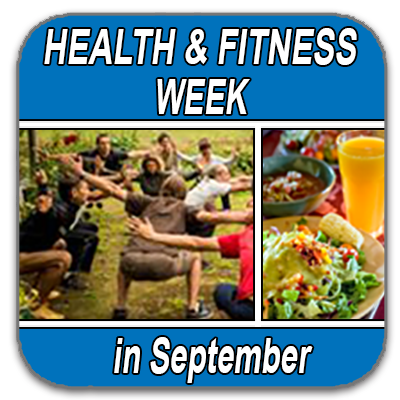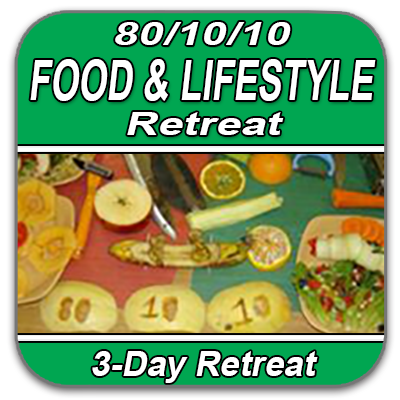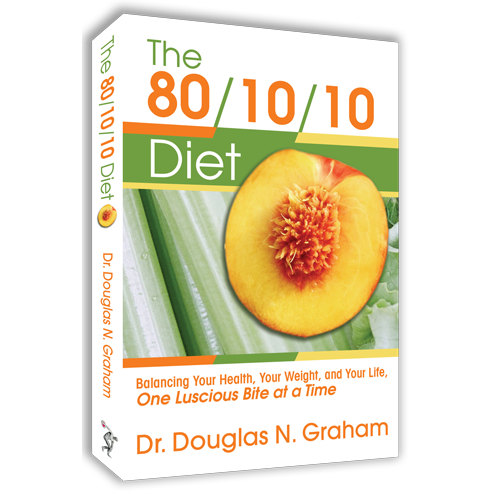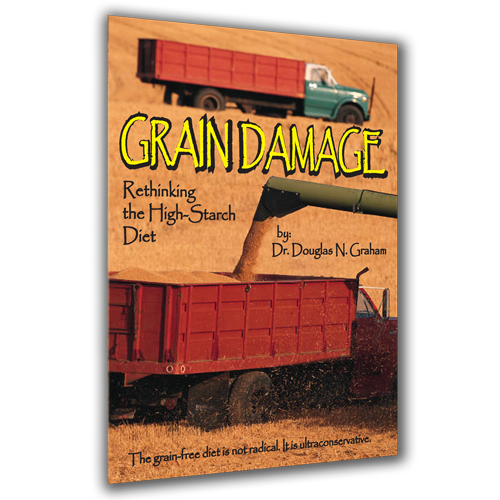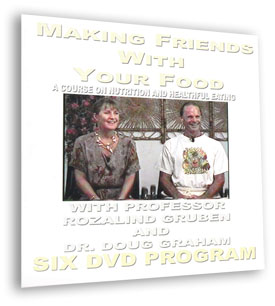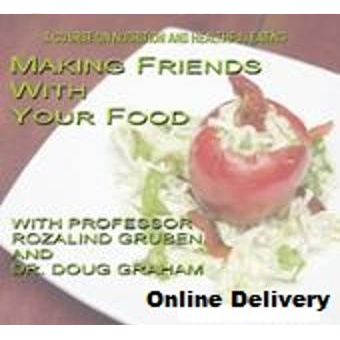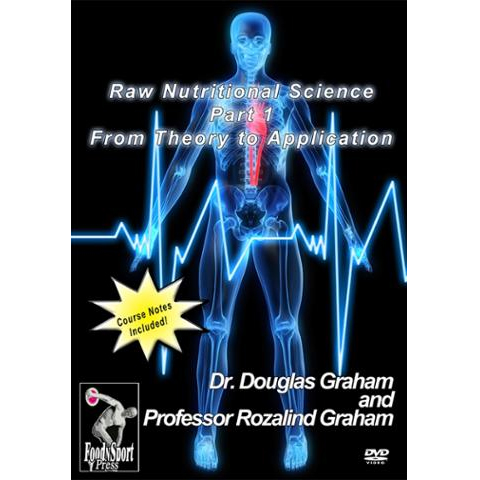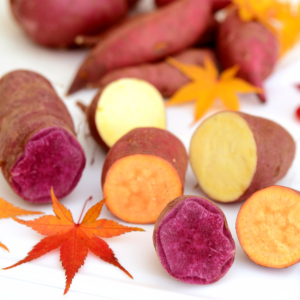
Dr. Graham talks about vegetable starches, addresses the cooking of starches, and answers the question of eating sweet potatoes, potatoes, pumpkins and other winter squashes raw.
“There must be some cooked foods that we can eat that aren’t harmful.”
“There must be some cooked foods that we can eat that aren’t harmful.” Such is the chant of the cooked food addict, or, if seen from the other side of the coin, the person not yet ready to adopt a wholly raw lifestyle.
Unfortunately, the facts are in, and the cooked food story just isn’t sweet at all. Plants store their primary fuel, sugar, in much the same was as do animals, by converting the sugars into a complex form known as starch. (In animals, what is referred to as starch in plants is known as glycogen.) By definition, starch is tasteless, telling us that we do not possess the digestive enzymes to access the sugars from which it is comprised. Only after cooking the starch so as to break it down to simple sugars does starch taste sweet even slightly sweet. Even the sweet potato does not taste sweet until it is cooked. But cooking carries profound consequences. In the late ’90’s, heating of carbohydrates came under scrutiny with the discovery of the Class 1 carcinogen acrylamide in baked potatoes. People eating cooked foods may prefer to forget this fact, but many states across the US have already passed laws making it illegal to cook complex carbohydrates without posting a warning notice to patrons about the dangers of acrylamide.
Protein in the form of DNA is in the nucleus of every cell, including those of the sweet potato. Proteins denature when heated, in a way that results in the formation of “enzyme resistant, cross-linked” bonds. We simply do not have the digestive enzymes to make proper use of the proteins in cooked foods. Instead, the human body recognizes such proteins as foreign, and attacks them, resulting in a wide range of auto-immune conditions.
The best reason for eating an all-raw diet is that you feel better. But science provides many other reason, including exposure to cancer causing carcinogens, age-promoting mutagens, and even the teratogens that result in birth defects. The next time you are tempted to eat a baked sweet potato, consider the facts, and choose to satiate yourself with fruit.
Of course, some people ask about eating the starchy vegetables in their raw state. Raw potato, raw sweet potato, raw pumpkin and other such vegetables are edible, and if prepared properly, can even be quite enjoyable. They are no substitute for fruit, however, as most people find that they can only eat such foods in relatively small quantities, or if eating a larger quantity, fairly infrequently. Where you might eat salad every night for dinner, or mango or banana for lunch every day, no one sits down to a meal of raw potato, pumpkin, or yam day after day. In fact, most people find these starchy foods quite unappetizing in their whole, natural state, and can only enjoy them when prepped in specific ways, usually processed sufficiently so that much less chewing is required, and with sufficient flavoring enhancement so that the starch is being used as a carrier for the added flavors.
Certainly there is room within The 80/10/10 Diet to enjoy the occasional noodle, pudding, ice cream, or pie filling made from a starchy vegetable, but these treats are to be eating in addition to a fruit-based diet, and not intended to replace the consumption of fresh fruit.
Articles:
- Q & A with Dr Graham: Are Oils Healthy Foods? by Dr. Graham
- Aren’t there health benefits to some oils? by Dr. Graham
- How Much protein is burned/needed? by Dr. Graham
- Fruit Sugar Causes Cancer, Diabetes, Candida, and Hypoglycemia?!? by Dr. Graham
- Us vs Them – Supplements Salesmen by Dr. Graham
- Nutrition: It’s NOT Just About Food – Two-Part Article by Dr. Graham
Retreats:
Amp Up Your Fitness |
Practical Skills To Thrive |
Self-Study Materials:
The 80/10/10 Diet |
Grain Damage |
The Cause Of Health |
Making Friends with Your Food DVDs |
Making Friends with Your Food Online |
Raw Nutritional Science: Part 1 |


